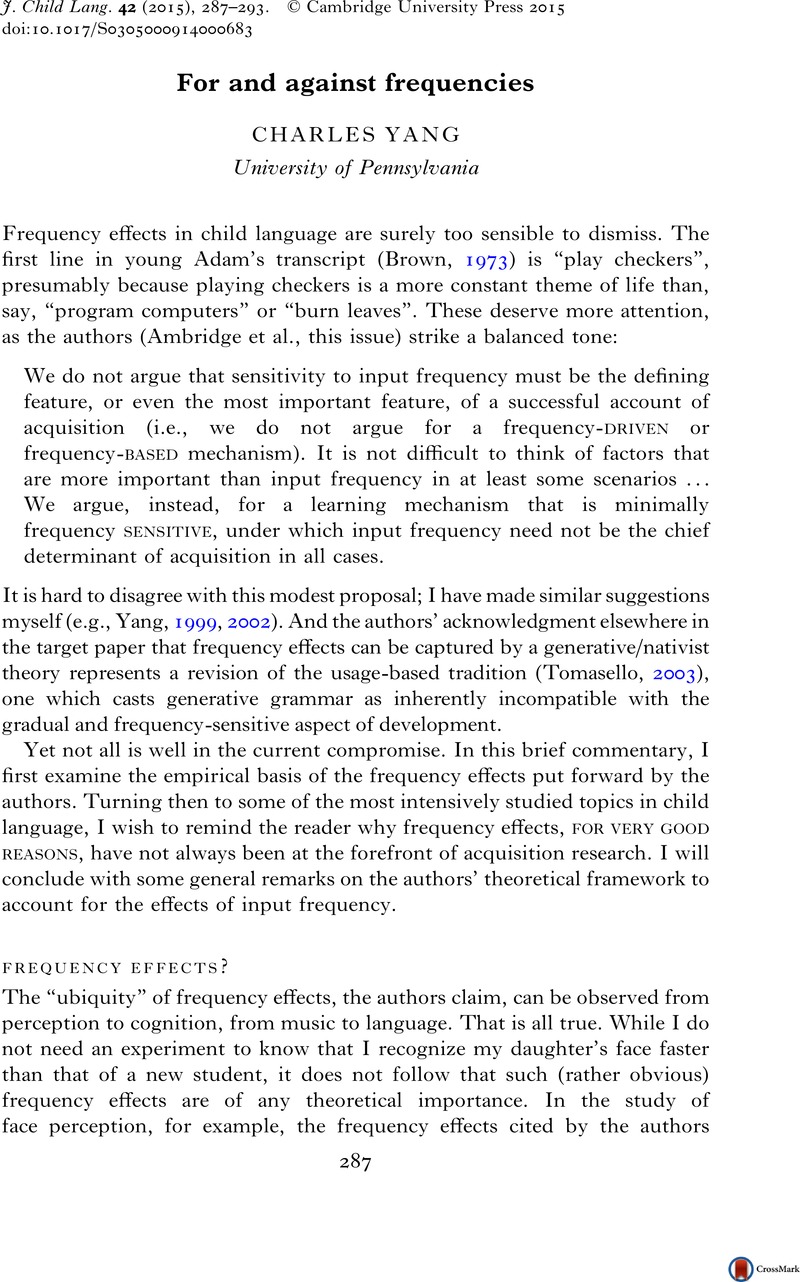Crossref Citations
This article has been cited by the following publications. This list is generated based on data provided by Crossref.
Ketrez, F. Nihan
2016.
Exploring the Turkish Linguistic Landscape.
Vol. 175,
Issue. ,
p.
183.
Crain, Stephen
Koring, Loes
and
Thornton, Rosalind
2017.
Language acquisition from a biolinguistic perspective.
Neuroscience & Biobehavioral Reviews,
Vol. 81,
Issue. ,
p.
120.
Yang, Charles
2018.
A formalist perspective on language acquisition.
Linguistic Approaches to Bilingualism,
Vol. 8,
Issue. 6,
p.
665.
Divjak, Dagmar
2019.
Frequency in Language.
Sanfelici, Emanuela
and
Schulz, Petra
2021.
Can Frequency Account for the Grammatical Choices of Children and Adults in Nominal Modification Contexts? Evidence from Elicited Production and Child-Directed Speech.
Languages,
Vol. 6,
Issue. 1,
p.
35.
Pérez-Leroux, Ana Teresa
2022.
Points of Convergence in Romance Linguistics.
Vol. 360,
Issue. ,
p.
36.
Perez-Cortes, Silvia
and
Giancaspro, David
2022.
(In)frequently asked questions: On types of frequency and their role(s) in heritage language variability.
Frontiers in Psychology,
Vol. 13,
Issue. ,
Xu, Ying Alice
Naigles, Letitia R.
and
Su, Yi Esther
2022.
Early Word Order Usage in Preschool Mandarin-Speaking Typical Children and Children With Autism Spectrum Disorder: Influences of Caregiver Input?.
Frontiers in Psychology,
Vol. 12,
Issue. ,
Yang, Charles
2023.
A User’s Defense of the Tolerance Principle: Reply to Enger (2022).
Beiträge zur Geschichte der deutschen Sprache und Literatur,
Vol. 145,
Issue. 4,
p.
563.
Hržica, Gordana
Košutar, Sara
Botica, Tomislava Bošnjak
and
Milin, Petar
2024.
The role of entrenchment and schematisation in the acquisition of rich verbal morphology.
Cognitive Linguistics,
Vol. 35,
Issue. 2,
p.
251.
Christensen, Ken Ramshøj
and
Nyvad, Anne Mette
2024.
Complexity, frequency, and acceptability.
Glossa: a journal of general linguistics,
Vol. 9,
Issue. 1,





